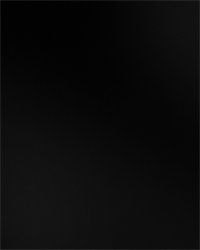Davida Nemeroff
Workspace: You started Night Gallery, a nocturnal exhibition space in Los Angeles. It seems like this has influenced your process and more specifically, your show at Workspace.
Davida Nemeroff: Consistently putting together exhibitions at Night Gallery helped me put together my Workspace show in terms of the placement of things and creating a feeling. I was very much against the idea of an “installation.” You were like, “I consider this to be an installation” and I was like, “no, it’s a show!” And Night Gallery is more than a nocturnal space; it’s a sort of surrealist place, a place of paint dripping, a funhouse.
WS: When I asked that question I was thinking-
DN: How the spaces are opposites?
WS: Right. Night Gallery is dark and has black walls, and Workspace is basically a white cube. But you used similar tactics in both spaces.
DN: … And I painted the white space pink.
WS: Laughs. Yes.
DN: It definitely influenced my tactics, that’s a good way of putting it. There were a lot of the same things involved. It had to do with framing, and using the whole wall to frame a piece. That’s how it became an installation because the walls were frames. That understanding of a wall came from smoking a lot of pot at Night Gallery, staring at the walls of the space and understanding what a space is. In terms of color, I found the two colors, the darkness and the magenta, were equal. You could say that they were opposites, but they were opposites to the point of being equals, just because they both took over the white space. Both Night Gallery and Workspace are white spaces- Night Gallery is just painted black. They’re both exhibition spaces that deviate from the idea of the white cube. Workspace’s size or Night Gallery’s hours; those are the mechanisms that you’re working with.
WS: What about the individual photographs in the show?
DN: First and foremost, Daniel and Paul, you were the first people to show my work in LA, at Workspace Selects. The first piece I made was so bizarre that I could go anywhere from there. I made that watermelon piece with that awful mauve, pink, and gold frame, and it was in the heaviest glass. It was so insane.
WS: That was one of my favorite pieces in that show. And that frame foreshadowed other work that you ended up making.
DN: That piece was way over the top because I really wanted to assert this idea of the frame. I’m interested in the frame, and I’m interested in staring, so the photographs that were in Potpourri, the two images, the picture of the potpourri and the roses, both directly suggest the idea of transfixion. They’re both super formal, they were lighthearted, and they were very pedestrian. One was staged, one wasn’t- what’s the difference? The show at Workspace, wasn’t about women’s rage, it was much more… what did you call it?
WS: Well, there was this Georgia O’Keeffe thing going on, it’s like a vagina, but it’s not?
DN: It’s like a pulsing, vibrating vagina. It’s like a vagina but it is.
WS: It was a clashing of different kinds of femininity. A lot of the things you were working with were feminine kitsch.
DN: I guess that’s the cliché. Feminine kitsch. Right now in my studio I’m surrounded by all of this grayness, but that’s still where I’m at, it’s still the same topic. My work is about the objectification of a subjectivity, creating and showing one way of seeing, breaking up how to see. It hasn’t always worked, but that’s always been my dream. The Workspace show might have been too forcefully through the orifice, I was overzealous about wanting to do that. But that’s what was really great about it, it’s scale, because it was the most outlandish, the pink-est, brightest show that I’ll do for a while.
WS: What are you working on now?
DN. My new work is limited to the zoo. Within the zoo I’ve found a limitation- deconstructing what it is to look at something. So there is this coy structuralist procedure going on. I don’t want to repeat things that have already been destructuralized in looking, I want to add.
I don’t want to be didactic. I don’t want it to be puns, I want it to be poetry. I want it to exist on its own, I want it to work. I don’t want it to be just me that sees it. I’m trying to create a subjectivity for other people. I really feel like how much femininity I was putting into the Workspace show was part of asserting the female, the constantly and continuously misunderstood species. That was part of being a feminist without partaking or aligning myself with any wave of feminism: not apologetic, post-castration, post the ideas of castration, being there. And that’s what the Workspace show was, it was the idea of the average ladies’ night. And then it’s time to get more serious about that. Not about pointing fingers, or fluffing up one’s self or gender, not even taking into consideration the oppression, just moving past the depression.
[all Davida Nemeroff. top to bottom: Roses, 2010. Invagination: Dusted Pink, 2009. The Ear, 2011. Courtesy of the artist and Annie Wharton Los Angeles]































